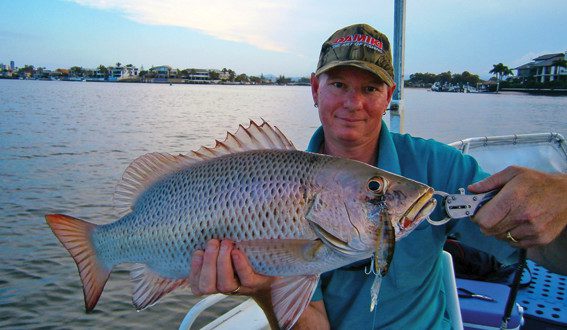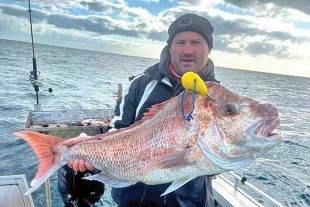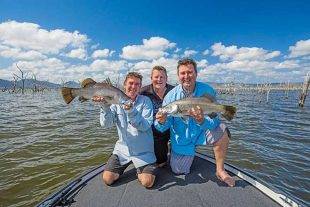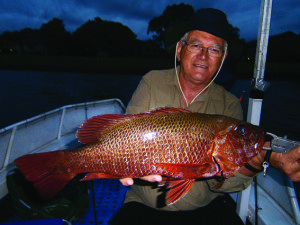
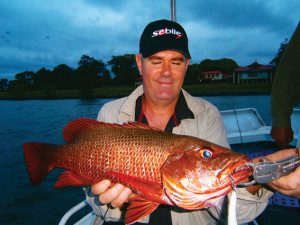
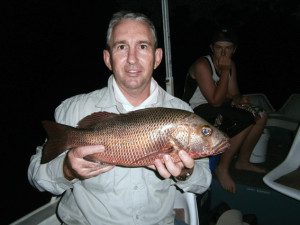
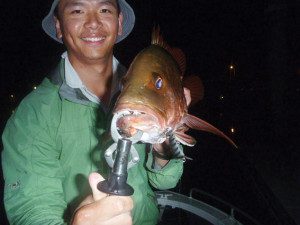
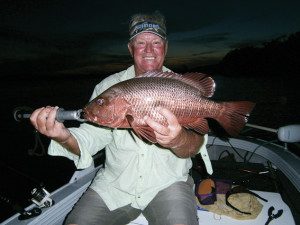
G’DAY; I hope you had a great Christmas and new year holiday break. There is no doubt the mighty mangrove jack are bucket-list fish for most anglers in southeast Queensland and northern NSW due to their aggressive, hard-fighting nature and the fact that they will respond to an array of well-presented lures and baits.
It should also be mentioned the jacks caught here in our backyards are consistently rated as being some of the largest in the country. Being contracted to catch jacks for breeding and aquaculture programs over the past 15 years has given me insight into some of the research being conducted around this species.
It appears that jacks stay in our rivers for a longer period before moving to offshore reefs than they do in the more northern parts of the country. I could go on about this more, but the point of this article is to pass on one of my favourite techniques for targeting the red devils: deepwater trolling.
Some anglers consider trolling as perhaps being lazy or lacking the more hands-on approach of casting and retrieving lures tight into structural areas, but trust me, when you get slammed by a big jack while trolling it makes the hairs on your neck stand up.
The equipment I use when trolling for jacks is very important and must be well maintained because these fish will find faults in reels that might not have a good drag system. Your knots and leaders must be tied correctly and checked in order to take the brunt of a jack’s bone-crushing strike.
I use 10-12kg baitcaster rods matched with quality baitcaster reels loaded with 30 and 50lb braid. I like a 40-50lb shock-resistant leader on the 30lb braid and a 50-60lb leader attached to the 50lb braid. Toray braid is my choice because it is very strong and has a finer diameter for its breaking strain than most other brands.
Some of my favourite trolling lures for the job are the Mann’s Stretch 20+ hard-bodies, though they are becoming increasingly hard to find these days, and Halco 8m-diving Crazy Deeps. Lively Lures Mad Mullets work well, as do Sebile Koolie Minnows, and I always carry my own Digga lures as part of my arsenal.
A lure that has received a lot of attention from me and is working exceptionally is the Atomic Shiner 85 Double Deep. These are smallish lures in terms of length but crash dive very well.
Another important and inexpensive piece of equipment to carry is a Tackle Back, which is basically a device for retrieving snagged lures. Mine has saved me from losing plenty of lures and therefore money.
The times and tides are also important when planning a mangrove jack trip. I have caught heaps of jacks through the middle of the day but by far the most consistent time to target them is very early in the morning, or even better, during the late afternoon and night.
I’ve lost count of the number of fish I have hooked around what I call the ‘fruit bat period’, and that is of course as the sun is about to set and the bats hit the sky. If you can manage a trip at this time that coincides with a tide change you are giving yourself a great chance of success.
Locations are also important, and the Gold Coast and Tweed regions have plenty of spots to choose from. Long stretches of retaining walls are a perfect place to start because they provide structure, which jacks 100 percent rely on, as well as plenty of depth. Some walls have collapsed in places, and this combined with the natural reef that you will often find in these high-erosion stretches provides the perfect hideout for jacks.
The trolling technique is not at all hard if you follow the basic principle that your lures must be kept tight and close to the structure at all times, with the ultimate scenario being crashing and bouncing your lures along the edges of the wall or hitting the reef along the bottom.
This is a no guts, no glory style of fishing and if you are not prepared to lose the odd lure, even with the help of a Tackle Back, you are not in the mix for consistent success. Always try to troll as slowly as possible, and I do most of my trolling against the tide for jacks, unlike when I’m trolling for flathead, bream and whiting, where I usually troll with the tide.
The only reason I troll against the tide is to slow the boat, and the tidal flow pushing into the lure helps to suspend it while it’s crashing through the rocks, which decreases snagging. This type of fishing can become a bit mundane because sometimes I will troll the same stretch of wall over and over for one or two hours without so much as a sniff. But trust me, when you do get smashed you will soon forget about the laborious time and effort you put in.
If you have the presence of mind, which in most cases you won’t because the strike is so brutal and fast, try to get the boat away from the wall and into the middle of the river or creek in order to try to pull the fish away from the craggy hideouts it will attempt to bust you up in.
Well that’s it for another month; I must start preparing my boat for a jack trip. After writing this I am as pumped as ever to fish for mighty mangrove jack.
Brad Smith
 Bush 'n Beach Fishing Magazine Location reports & tips for fishing, boating, camping, kayaking, 4WDing in Queensland and Northern NSW
Bush 'n Beach Fishing Magazine Location reports & tips for fishing, boating, camping, kayaking, 4WDing in Queensland and Northern NSW

